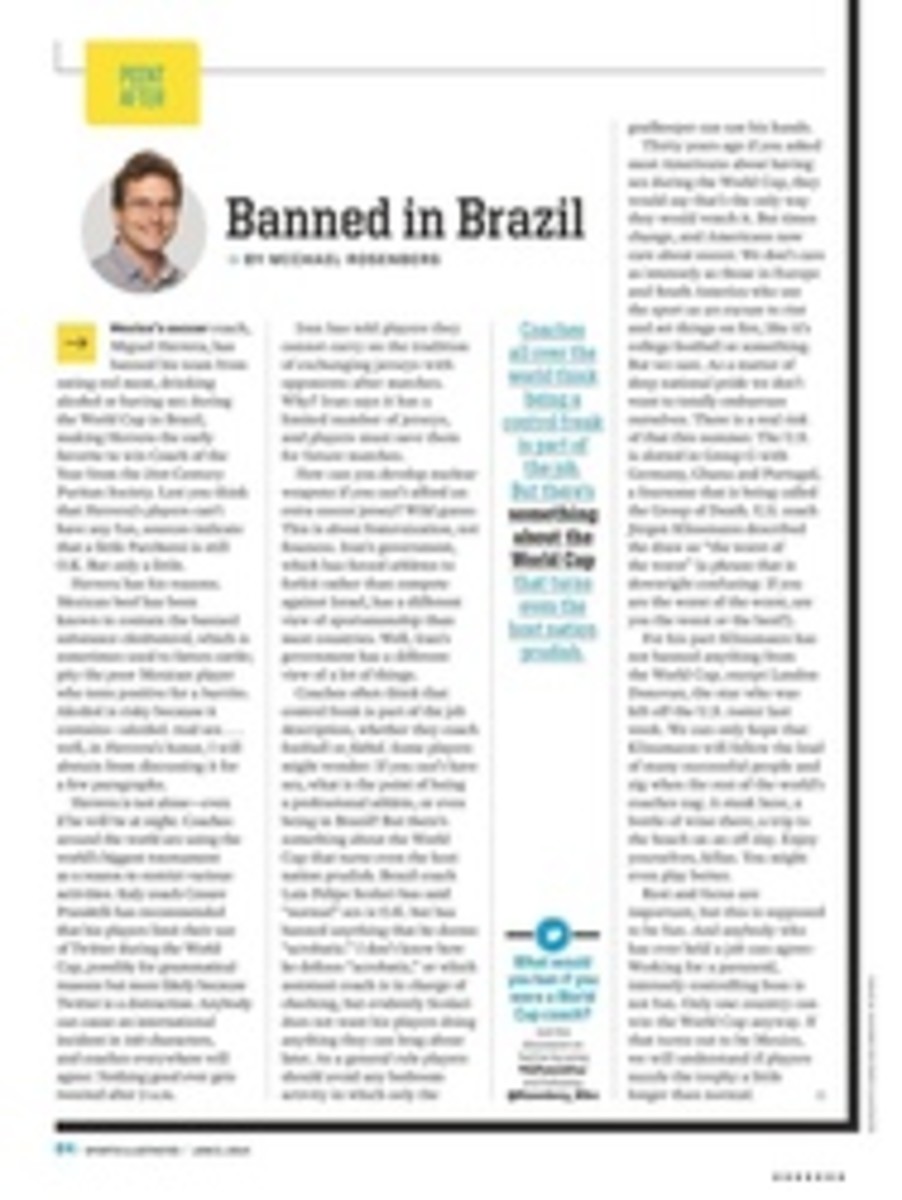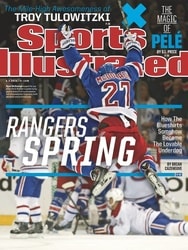
BACK ON COURSE
ONCE GIVEN UP FOR DEAD, HILLCREST COUNTRY CLUB, A CHALLENGING DONALD ROSS LAYOUT IN THE HEARTLAND, IS THRIVING AGAIN—MUCH TO THE DELIGHT OF THE AUTHOR, WHOSE MEMORIES OF THE PLACE RUN DEEP
I SAID GOODBYE to Hillcrest Country Club on a sunny fall afternoon in 2011. Playing alone, I teed off on the infamous 1st hole, a downhill, 243-yard par-3 that Ray Floyd once called the toughest opening hole he had ever played. Then, surrounded by flaming maples and preening oaks, I followed a trail blazed a half century before by Kansas City Open champs Dick Mayer, Al Besselink and Ernie Vossler—and by Arnold Palmer, who once needed 83 blows to get around Hillcrest's rugged layout. Come sunset, my car was the only one in the parking lot. Taking one last, very long look at the old stone clubhouse, I pulled onto Hillcrest Road and drove away.
Fortunately, Hillcrest's death rattle turned out to be more of a smoker's cough. Missouri's only remaining Donald Ross--designed layout reopened the following spring and endures today as a semiprivate, daily-fee course. I play there a couple of afternoons a week, dodging the boisterous league golfers and company-outing cutups who have reanimated the old course. Bless them all. They've pulled Hillcrest out of Chapter 11 bankruptcy.
Before I go further, I need to make one thing clear: I don't love Hillcrest because of Donald Ross. I love Hillcrest because it was my summer playground when I was a teenager. I played junior golf there, splashed in the pool, gorged on the Friday-night seafood buffet, caddied on weekends and stretched out on the grassy slope below the 1st tee to watch fireworks on the Fourth of July. Walking through the sprawling stone clubhouse, I encounter the ghosts of my chain-smoking, loquacious dad, who served a term as club president, and my older brother, Tom, who held the course record, dominated the region's amateur ranks and represented Hillcrest during a brief run on the PGA Tour.
But every so often—such as now, with the USGA about to descend on Ross's beloved Pinehurst No. 2 for its men's and women's national championships—I am reminded that Ross courses are widely revered. They're not all masterpieces, and some of them have had mustaches painted on them by posterity, but playing one of the 399 courses attributed to Ross is like fingerpicking a vintage Martin guitar. Something of the designer is inevitably expressed, something sings ... and you don't need a lot of talent to appreciate the craftsmanship.
IT DOESN'T take much, though, to wipe a Ross original off the face of the earth. Nobody knows this better than David Francis, Hillcrest's owner since 2006. When he acquired Kansas City's second-oldest private golf club, it was running significant deficits and was down to 230 golf members and 110 social members—well below the numbers that had allowed it to prosper for decades. Some of that decline owed to the perception that Hillcrest, built in 1916, was on "the wrong side of town"—i.e., away from the burgeoning bedroom communities of Johnson County, across the state line in Kansas. Another factor was a real estate market correction that has forced the closing of more than 600 courses across the U.S. in the past eight years.
"They were going to board this place up when I bought it," Francis says, indulging in some hyperbole. "It was overstaffed. They'd send several waiters just to pour tea in the women's card room."
Convinced that sound business practices would right the ship, Francis turned Hillcrest's management over to a business partner who had impressed him on another project. Vlad the Impaler—not his real name—promptly went on a management rampage. Noticing a drink left atop the club's grand piano, Vlad chewed out the offender and his wife on the course, leading them to resign without holing out. Spotting a cart on the 4th fairway on a paths-only day, Vlad yanked out the key, enraging its driver—who just happened to be the president of a trade association paying Hillcrest 20 grand for its annual outing. And my favorite: Vlad told the chef to stop ordering Heinz ketchup as a rebuke to Democratic presidential candidate John Kerry. (Cherchez la femme!)
"Club presidents' widows used to get a free social membership," says Kurt Everett, Hillcrest's general manager. "That was nothing but goodwill, and they came in every Friday and Saturday night and spent money. But he took that away. Anything the members liked, he took away." Vlad even had an answer for those who quit Hillcrest: He sued them for breach of contract and then banned them from the property, going so far as to forbid their participation in charity scrambles.
Disturbing, yes. But then Vlad went after Donald Ross.
At first it was a matter of the course's conditioning. Greens weren't mowed as often, branches and debris weren't cleared as promptly after storms. "There was a lot of deferred maintenance," says Everett. "[Vlad] thought if you didn't overseed, you didn't have to hire somebody to mow." But then the Impaler got it in his mind that the 9th green, on high ground near the clubhouse, was hogging space that would generate more income as—wait for it—a wedding bower!
"I came out here one day, and the green was being torn up," Francis says, shuddering at the memory. "I said, 'What are you doing?' " The bower never got built, but Vlad installed a replacement green some 50 yards short of Ross's. It was tiny, perpetually soggy and propped up by a stone wall. In less time than it takes to schedule a deposition, one of Kansas City's strongest par-4s had been destroyed.
Fed up, Francis fired Vlad, touching off an exchange of suits and counterclaims that entertained court reporters and baffled readers of The Kansas City Star. When the smoke cleared, Hillcrest was broke, depopulated and sparsely staffed. "I take full responsibility," the owner says. "I could have stepped in sooner."
Francis, time has proved, wanted to save Hillcrest, not annihilate it. A businessman-philanthropist who moonlights as a commercial pilot, he has used some of his Puritan Bennett fortune to build and operate Prairie Highlands Golf Links, a highly regarded public course in Olathe, Kans. Now, still stinging from his foray into country-club golf, he promises to put Hillcrest back on its feet." I felt I needed to correct the situation," he says. "What happened here was not representative of my family or my integrity."
The man is digging deep into his pockets to fulfill that pledge. Returning members have seen extensive clubhouse renovations, a resurfaced parking lot and a fleet of spiffy new golf carts. The pared-down clubhouse staff, managed by Everett and golf-operations director Jeff Locke, wear perpetual smiles and pitch in like Peace Corps volunteers. I'm no longer surprised, for instance, to see head pro John Bozarth on a ladder painting exterior trim.
Meanwhile, course superintendent Brett Mathias and assistant greenkeeper Dallas Ridenour have a punch list of their own, meant to restore Hillcrest's luster. It's a daunting task because the site's deer-infested verges and easily eroded swales demand constant attention. In the market for a dead tree? Call 816-523-8601.
THE MOST pressing concern, of course, is to get Donald Ross to stop spinning in his grave. A big step was taken last year when the greenkeepers, working from old aerial photos, restored the 9th green. Like the Ross original, the new putting surface is disarmingly plain, unbunkered and seemingly defenseless, its surface so subtle as to appear artless. Hah! Approach shots landing left of center trickle off the green, and a two-putt par or a bogey feels like a birdie. The old Scotsman, whose silhouette is plastered on practically every flat surface at Hillcrest, would surely smile.
There is still much to be done. The range is scruffy, the pool remains tarped, and a picnic pavilion hides behind a pile of sawed-up tree trunks. But little by little the old club is regaining its vitality. About 50 former members have rejoined, and a flock of newcomers has signed up, unable to resist the club's Donald Ross pedigree and for-a-limited-time-only monthly dues of $229. "We've overdelivered on every promise we've made," says Francis, happy to be wearing the white hat again.
Hillcrest lovers got more good news recently when Cerner Corporation, the health-care giant, launched a 237-acre, $4.3 billion innovation campus near Hillcrest that is expected to create up to 15,000 jobs. That project, along with a planned 350-acre biotech park, should rid the club of its wrong-side-of-town stigma and provide a pool of prospective members from the lab-coat and software-geek crowd.
"There's so much passion for this golf course," says Everett. "It's a thinking man's golf course. It's a gem. And it's worth saving."
I—and a couple of clubhouse ghosts—happen to agree.
I don't love Hillcrest because of Donald Ross. I love Hillcrest because it was my summer playground when I was a teenager.
Little by little, the old club is regaining its vitality. About 50 former members have rejoined, and a flock of newcomers has signed up.
PHOTO
Photograph by KOHJIRO KINNO FOR SPORTS ILLUSTRATED
FOR STARTERS When Ray Floyd teed it up at Hillcrest some 30 years ago, he called the par-3 1st the toughest opening hole he had ever played.
TWO PHOTOS
Photographs by KOHJIRO KINNO FOR SPORTS ILLUSTRATED
BABY STEPS Everett (top) and Francis are slowly restoring the luster to the last Ross track in Missouri still standing.
TWO PHOTOS
Photographs by KOHJIRO KINNO FOR SPORTS ILLUSTRATED
ALL HANDS ON DECK At a small club like Hillcrest, no job is too small for Locke (top), Mathias (bottom, left) and Ridenour.

